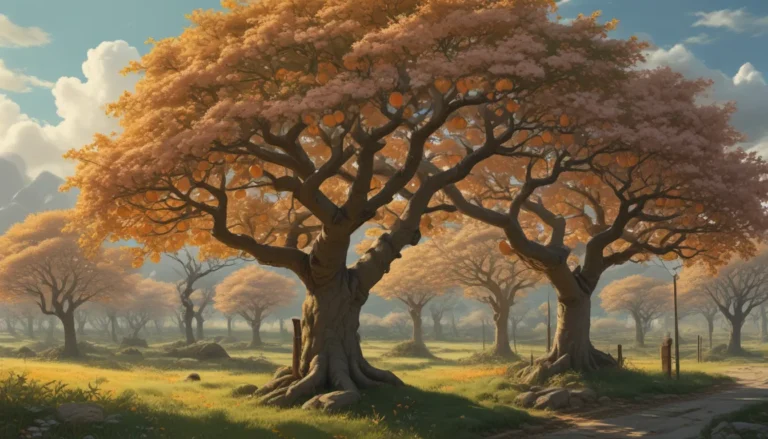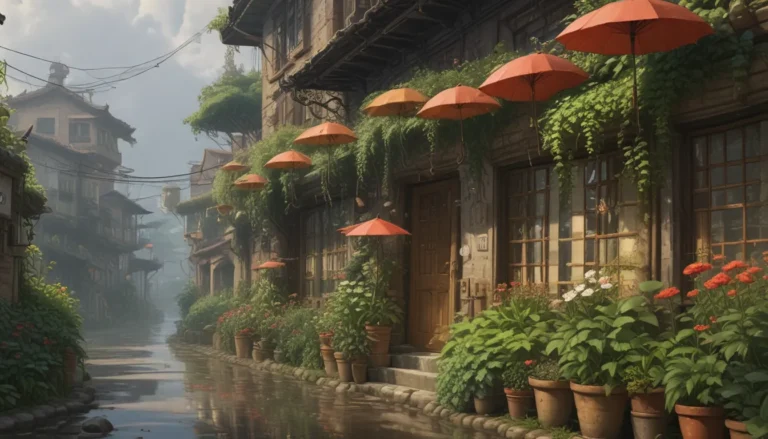Mastering the Art of Cascade-Style Bonsai Trees

If you are a bonsai enthusiast looking to create a dramatic artistic statement, the cascade-style bonsai might just be the perfect choice for you. The elegant arch and gracefully sweeping trunk of this style evoke images of an old, wind-battered survivor clinging to the edge of a cliff. In this guide, we will delve into the world of cascade-style bonsai trees, providing you with valuable information to help you master this unique art form.
What You’ll Learn
- What Is the Cascade Style?
- When to Train
- Potting
- Training
- A Natural Alternative
The cascade style of bonsai is a true art form that requires patience, skill, and a deep understanding of tree shaping. This isn’t a process that can be rushed, so the sooner you start, the better. Let’s dive into the world of cascade-style bonsai trees and explore the intricacies of this captivating style.
What Is the Cascade Style?
Cascade is a style of bonsai where the tree bends, arching over the side of its pot. There are two types of cascading style bonsai: cascading and semi-cascading. With cascading bonsai, known as kengai in Japanese, the apex of the tree extends below the container that the plant is growing in. On the other hand, semi-cascading bonsai, known as han-kengai, extend below the top of the container, but the apex doesn’t extend below the base.
The aim of cascade-style bonsai is to create a trunk that grows up for a bit before arching over and growing down. The arc can be gradual or dramatic, with the trunk winding back and forth as it cascades down. Regardless of the shape, the overall appearance should be one of balance. Bonsai trees always have a “front,” and when viewed from this angle, the display should appear balanced and proportionate.
Types of Cascade Bonsai
- Single cascade (informal): A single trunk grows out of the pot, arches over, and continues down.
- Double cascade (formal): A smaller trunk creates a canopy over the main trunk, which cascades down.
Most cascade bonsai trees are made using evergreen trees like pines and junipers, as they naturally grow in a cascading shape in the wild. However, any plant can technically be made into a cascade, so feel free to let your imagination run wild. Cotoneaster and jade plants are also popular choices for cascade bonsai.
Key Features of Cascade Bonsai:
– Trunk grows up before arching over and growing down
– Requires a sense of balance and proportion
– Should not touch the pot rim
– Trunk can wind back and forth
– Branches should be parallel to the ground
When to Train
Training a cascade bonsai tree can be done at any time of year, but new growth in spring tends to be more pliable and easier to train. If your tree already has a somewhat cascading shape, training may only take a year or two. However, shaping older or more upright trees can take years or even decades to achieve the desired cascade effect.
Potting
Potting is a crucial aspect of creating a cascade bonsai tree, as the plant needs to be securely anchored. It’s recommended to use a tall, deep pot that provides room for the tree to grow deep, stabilizing roots. Young trees with immature roots may need to be wired into the pot to prevent tipping over or pulling out of the substrate.
Steps for Anchoring a Plant:
1. Determine the number of drainage holes in your container.
2. Use a cotter pin, wire, or nail to secure the plant in place.
3. Wrap the wires around the root ball and fill the container with bonsai potting mix.
4. Adjust the position of the tree in the pot and fill in with soil as needed.
Training
Training is a fundamental aspect of shaping a cascade bonsai tree. You’ll need to practice using flexible wire, raffia, and branch benders to train the tree into the desired shape. It’s important to remove the wire after a few months to allow the plant to grow naturally without being restricted.
Tips for Training a Cascade Bonsai:
– Practice on a cheap sapling before working on prized trees
– Use aluminum or copper wire for shaping
– Soak raffia in water before wrapping around branches
– Check and re-wire branches regularly to prevent damage
– Use branch benders for more significant bends in the trunk
A Natural Alternative
Some bonsai enthusiasts prefer using a more natural method to encourage a cascade-style growth in bonsai trees. By turning the pot on its side and allowing the trunk to grow sideways towards the light, you can achieve a cascading effect without heavy manipulation. However, anchoring the root ball is crucial to prevent the plant from falling out of the pot.
Once you have achieved the desired bend in the trunk, you can return the plant to an upright position and continue training it with wire. Natural methods can be a less invasive way to shape cascade bonsai trees while still achieving stunning results.
Conclusion
Cascade-style bonsai trees are truly living works of art that require dedication, skill, and patience to master. The graceful arching shape of a well-crafted cascade bonsai is a sight to behold and always draws admiration from onlookers. While the process of creating a cascade bonsai may take time and effort, the end result is well worth it for any bonsai enthusiast.
What species are you using for your cascade bonsai masterpiece? Share your thoughts and experiences in the comments below. If you are passionate about bonsai trees, be sure to explore our other guides on getting started with bonsai and growing different varieties of bonsai trees. With dedication and practice, you can master the art of cascade-style bonsai and create stunning living artworks for years to come.





